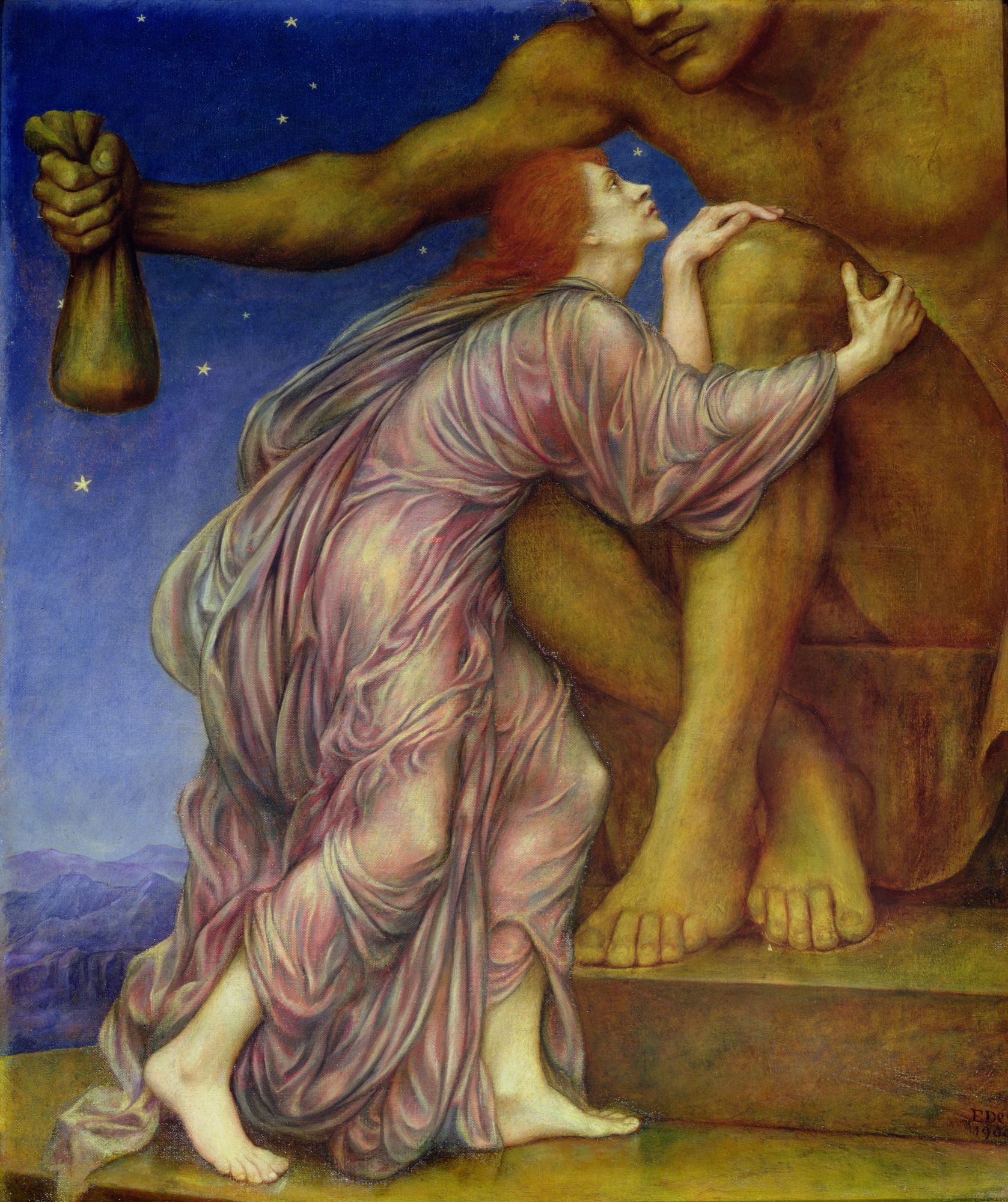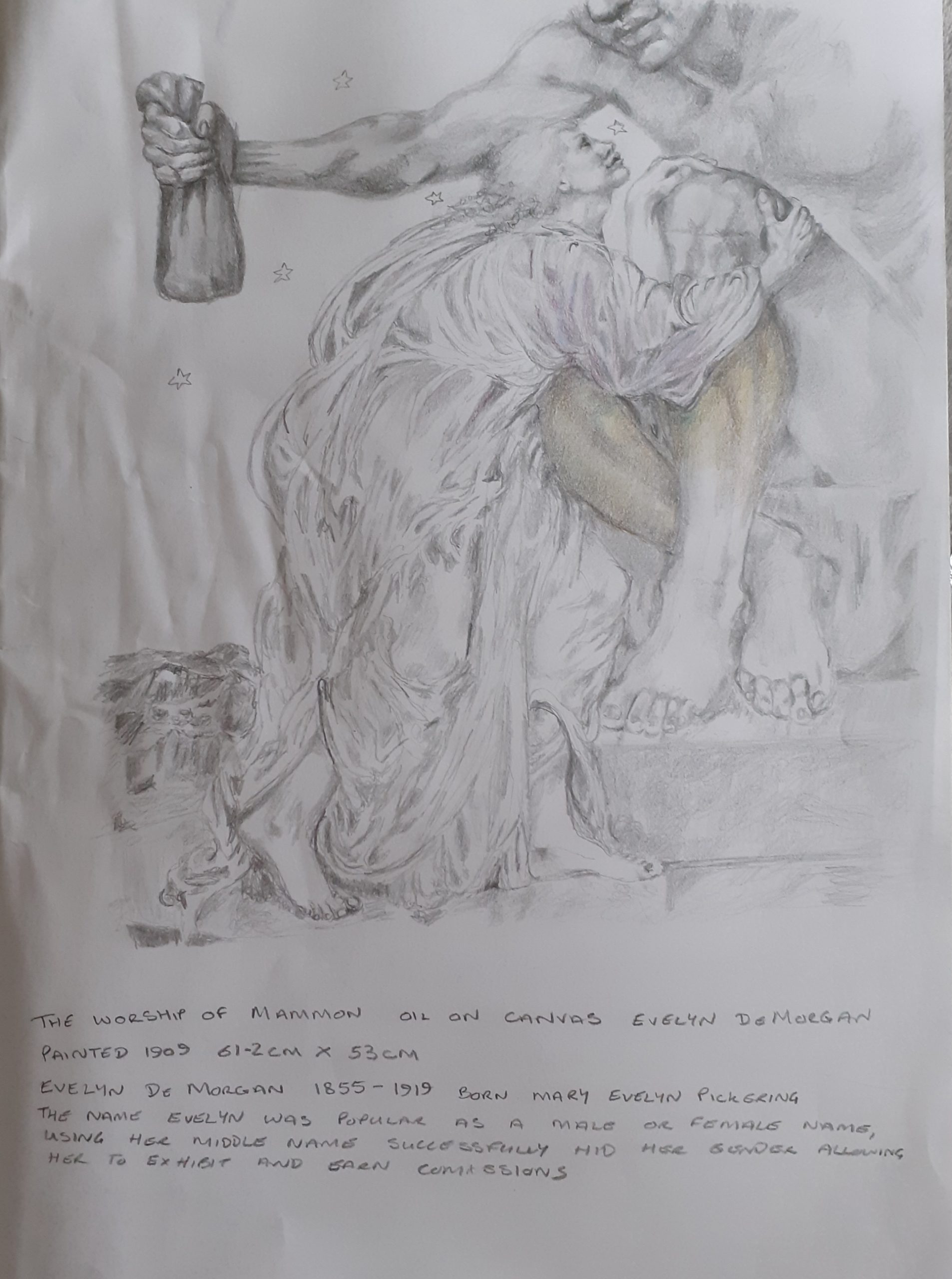
‘The Worship of Mammon’ by Evelyn De Morgan has just returned from Bonn, Germany, where it was included in an exhibition about artists’ responses to Capitalism, from the Industrial Revolution to contemporary artists. You can find more information about the show in this virtual tour.
To celebrate the paintings coming back to the Watts Gallery – Artists’ Village, our volunteer, artist Vanessa, interprets the painting through her sketches of it.
Mammon is the God of worldliness. The word in Syriac means ‘riches’ and occurs in the Bible, in Matthew’s Gospel, which states, “you cannot serve God and Mammon”
Evelyn De Morgan’s (1855-1919) painting explores the issues of material greed in contrast to spiritual wealth, which was a particular concern during the Industrial Revolution amongst philosophers and artists.
In this composition we see Mammon holding out a bag of money, which is being rejected, instead the figure is clutching to Mammon’s leg begging in desperation for all the wealth he can bestow. De Morgan’s sister Wilhelmina Sterling discusses this painting in her biography of the artist, noting the golden skin colour of Mammon hinting that he is an enormous statuesque deity. His face appears to have a smirk as though he is relishing the poor wretch’s agony (Stirling, 1922).
The favoured composition amongst artists depicts Mammon as the central figure, however De Morgan situates Mammon at the edge, almost out of the frame with the intention that the viewers gaze focuses on the human figure, who is wearing blue/purple drapery. Perhaps to install through imagery the notion that material wealth will make you feel miserable, like this poor ‘wretch’.
Movement and realism have been represented by the skilful impression of the cloth which wraps around the human figure with the sunken eyes and drawn features, adding to the narrative of a desperate pleading person.
The colour of the drapery gives me the impression of bruising, perhaps a tainted view of materialism versus spiritualism? These colours were often used by De Morgan to symbolise spirituality and worship
I like to explore a painting by sketching, as this allows me to concentrate on the minutia, the brush strokes and artistic process. Amid this exercise, I noticed the central figure had an Adams apple, the hands and feet appear to be masculine, and the signatory rounded belly of her female protagonists was absent. It was not as women, as listed in previous interpretation of the painting and therefore a re-reading of the painting can be given. It is doubtful that De Morgan was lacking suitable female models and so it is likely that this figure is a symbol of humanity rather than gender specific and therefore androgynous.
Finally, everything in a composition always has a purpose, turning my attention to the background the mountains are in a similar colour pallet to the figure of humanity, it is difficult to distinguish between them, so perhaps she was implying how damaged the world would be without spiritualism? There are stars shining against a dark blue sky, which gives the impression of a night sky, which to me is further symbolism relating to Mammon’s dark presence, as something to be avoided so that one might return to the light.







